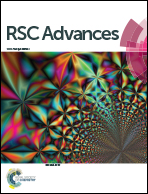Luminescent properties of a new cyan long afterglow phosphor CaSnO3:Lu3+
Abstract
Persistent luminescence (PPL) materials have gained lots of attention and have been widely used in traffic signs, displays, medical diagnosis and architectural decoration. Single ion doped PPL materials with stable emission are excellent for practical applications, but it is difficult to cover the entire wavelength range. Here, a new cyan long-lasting phosphor CaSnO3:Lu3+ was successfully synthesized at 1200 °C by the conventional high temperature solid state method. From the X-ray photoelectron spectroscopy (XPS), it can be concluded that the Sn2+ ions exist in the crystal lattice because the doping of Lu3+ ions changes the valence state of the Sn ions. According to the thermally simulated luminescence (TSL), the continuous afterglow of CaSnO3:Lu3+ phosphors is produced by appropriate hole or electron traps, which are caused by doping the calcium stannate host with rare earth ions (Lu3+). The long-lasting phosphorescence (LLP) properties of the cyan phosphor were first discussed and the afterglow mechanism was expounded in detail. The excitation and the emission spectra of the phosphor revealed the characteristic broad peak of the Sn2+ ion. Typical afterglow behavior of the CaSnO3:Lu3+ phosphors was exhibited after power was turned off.



 Please wait while we load your content...
Please wait while we load your content...